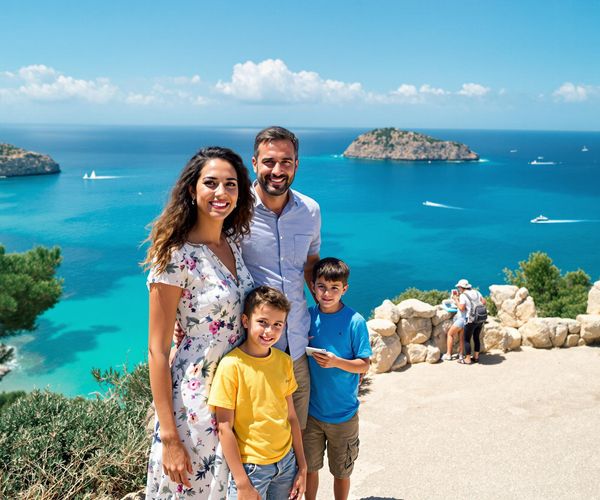
The Enchanting Jewel of the Balearic Islands
Discover Palma de Mallorca: A Captivating Blend of History, Culture, and Natural Beauty in the Heart of the Balearic Islands.
Palma de Mallorca, the capital of the Balearic Islands, is a captivating blend of history, culture, and stunning natural beauty. Nestled along the azure waters of the Mediterranean, Palma offers a rich tapestry of experiences for every traveler. From its majestic Gothic cathedral, La Seu, which dominates the skyline, to the winding streets of the Old Town filled with charming shops and cafes, there's always something to discover. Stroll along the Paseo Marítimo, a scenic promenade by the sea, and enjoy the vibrant nightlife that Palma is famous for. The city's beaches, like Playa de Palma and Cala Major, provide a perfect escape for sun-seekers. For history enthusiasts, the Almudaina Palace and Bellver Castle offer a fascinating glimpse into Palma's storied past. Food lovers will delight in Palma's culinary scene, with a variety of restaurants serving everything from traditional Mallorcan dishes to international cuisine. The Mercat de l'Olivar is a must-visit for fresh produce and local delicacies. Whether you're exploring the picturesque streets, relaxing on the beach, or indulging in delicious food, Palma de Mallorca promises an unforgettable experience.
Local tips in Palma de Mallorca
- Visit La Seu Cathedral in the morning to avoid crowds and enjoy the stunning stained glass windows illuminated by the sunlight.
- Take a leisurely walk through the Old Town and explore its hidden courtyards and historic buildings.
- Sample local cuisine at a traditional tapas bar for an authentic taste of Mallorcan flavors.
- Use public transport or rent a bike to explore the city and its surroundings in an eco-friendly way.
- Don't miss the sunset at Bellver Castle for a panoramic view of Palma and the Mediterranean Sea.
Neighbourhoods in Palma de Mallorca
The Enchanting Jewel of the Balearic Islands
Palma de Mallorca, the capital of the Balearic Islands, is a captivating blend of history, culture, and stunning natural beauty. Nestled along the azure waters of the Mediterranean, Palma offers a rich tapestry of experiences for every traveler. From its majestic Gothic cathedral, La Seu, which dominates the skyline, to the winding streets of the Old Town filled with charming shops and cafes, there's always something to discover. Stroll along the Paseo Marítimo, a scenic promenade by the sea, and enjoy the vibrant nightlife that Palma is famous for. The city's beaches, like Playa de Palma and Cala Major, provide a perfect escape for sun-seekers. For history enthusiasts, the Almudaina Palace and Bellver Castle offer a fascinating glimpse into Palma's storied past. Food lovers will delight in Palma's culinary scene, with a variety of restaurants serving everything from traditional Mallorcan dishes to international cuisine. The Mercat de l'Olivar is a must-visit for fresh produce and local delicacies. Whether you're exploring the picturesque streets, relaxing on the beach, or indulging in delicious food, Palma de Mallorca promises an unforgettable experience.
When is the best time to go to Palma de Mallorca?
Iconic landmarks you can’t miss
Catedral-Basílica de Santa María de Mallorca
Experience the grandeur of Catedral-Basílica de Santa María de Mallorca, a Gothic masterpiece and essential stop in the heart of Palma, offering stunning architecture and rich history.
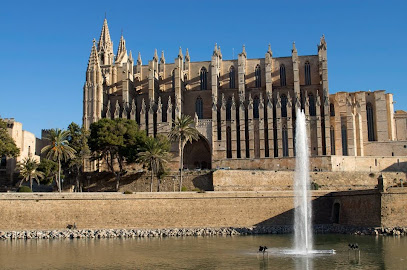
Plaça d'Espanya
Discover the vibrant culture and historical charm at Plaça d'Espanya, the heart of Palma, where history and modern life beautifully intertwine.
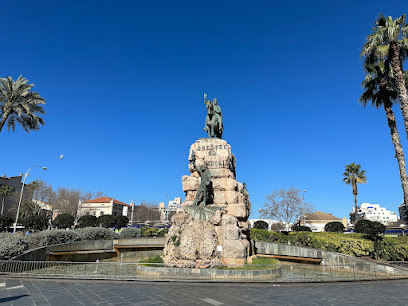
Castell de Bellver
Experience the majestic Castell de Bellver, a historic castle in Palma offering stunning views and a glimpse into Mallorca's rich heritage.
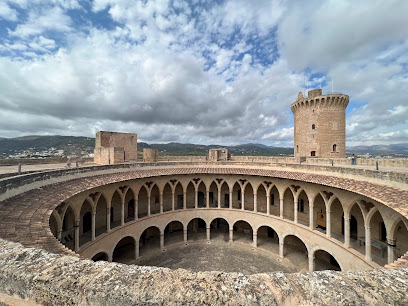
Royal Palace of La Almudaina
Discover the rich history and stunning architecture of the Royal Palace of La Almudaina, a must-visit historical landmark in Palma, Mallorca.
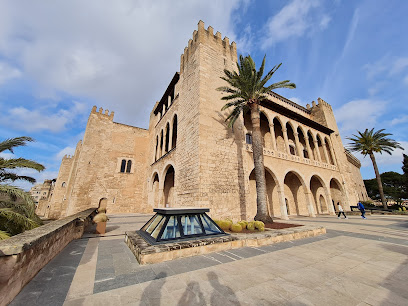
Llotja de Palma
Llotja de Palma: A stunning Gothic landmark in the heart of Mallorca, showcasing rich history and breathtaking architecture.
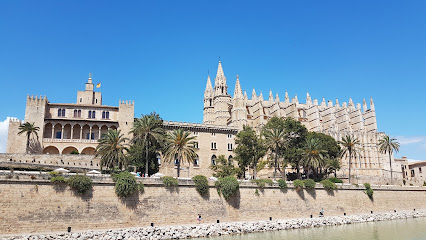
Banys Àrabs
Explore the ancient Banys Àrabs in Palma, a serene oasis that showcases Mallorca's rich Moorish heritage amidst lush gardens and historic architecture.
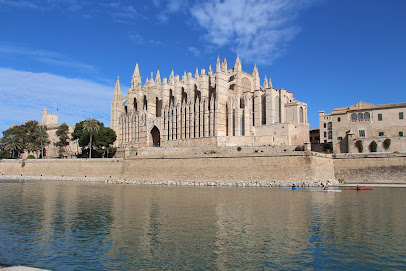
Poble Espanyol de Mallorca
Explore the architectural beauty of Spain in one place at Poble Espanyol de Mallorca, a captivating open-air museum in Palma.
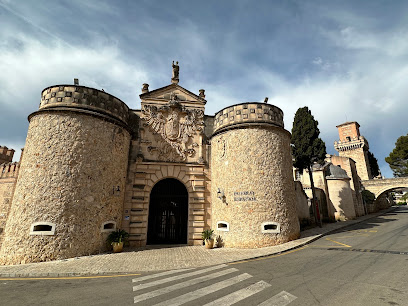
Parc de la Mar
Experience tranquility at Parc de la Mar, a stunning park in Palma with breathtaking views of the sea and the historic cathedral.
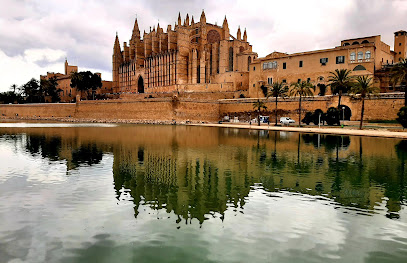
Basílica de Sant Miquel de Palma
Explore the Basilica of Sant Miquel de Palma, a Gothic masterpiece adorned with stunning art and rich history in the heart of Mallorca.
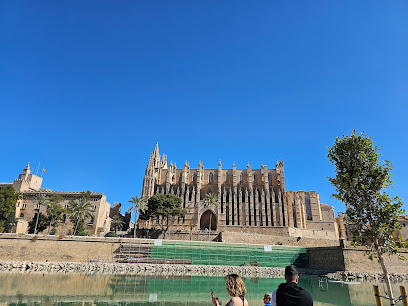
Basílica de Sant Francesc
Discover the Gothic beauty and spiritual significance of Basílica de Sant Francesc, a must-visit landmark in Palma, Mallorca.
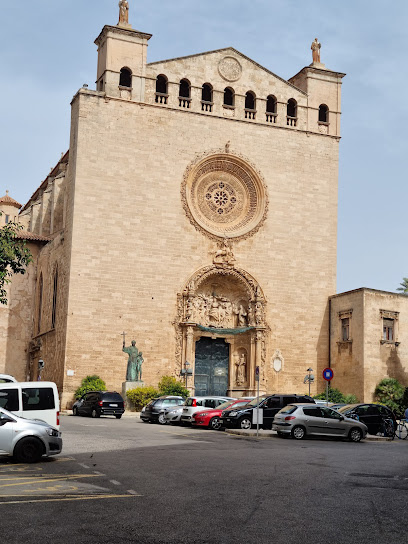
Coliseu Balear
Discover the architectural beauty and cultural significance of Coliseu Balear, Palma's iconic bullring, and immerse yourself in local traditions.
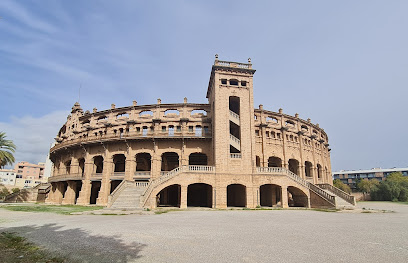
Torre d'en Pau
Explore Torre d'en Pau, a historical landmark in Platja de Palma, where rich heritage meets stunning Mediterranean views.
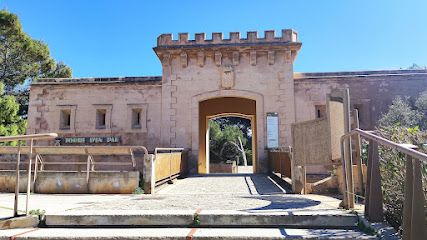
Casal Solleric
Discover contemporary art at Casal Solleric, Palma's vibrant cultural hub nestled in a stunning historic building.
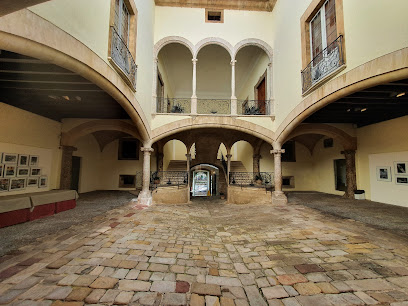
Convent de Santa Clara
Explore the tranquil beauty and rich history of Convent de Santa Clara, a serene retreat in the heart of Palma, Mallorca.
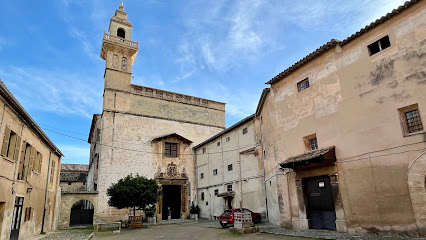
City Sightseeing Palma de Mallorca
Discover the charm of Palma de Mallorca with versatile sightseeing tours that showcase the city’s rich history and stunning landscapes.
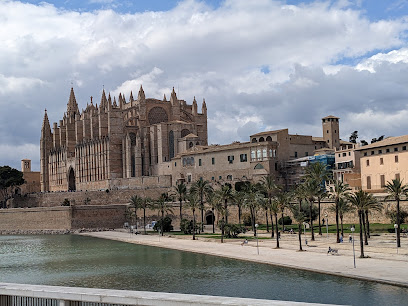
Unmissable attractions to see
Catedral-Basílica de Santa María de Mallorca
Discover the breathtaking architecture and rich history of the Cathedral-Basilica of Santa María de Mallorca, a true gem in Palma's landscape.
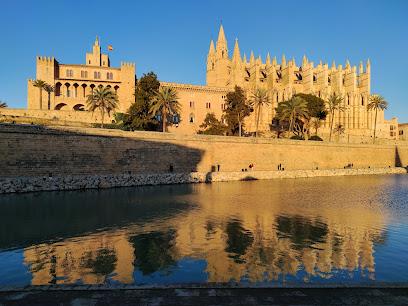
Palma Aquarium
Discover the breathtaking underwater world at Palma Aquarium, a family-friendly attraction in the heart of the Balearic Islands.

Castell de Bellver
Explore the historical beauty and stunning vistas of Castell de Bellver, an iconic castle in Palma, Mallorca, where history and nature unite.
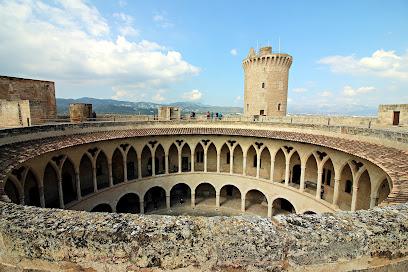
Es Trenc
Discover the breathtaking beauty of Es Trenc, Mallorca’s pristine beach known for its soft sands and clear waters, perfect for a relaxing getaway.
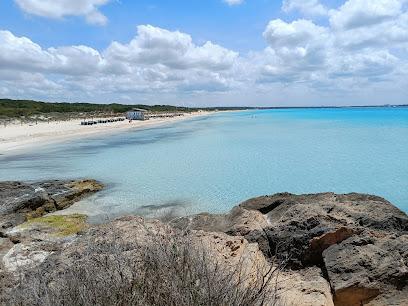
Train Sóller Station (Palma de Mallorca)
Discover the historical charm of Train Sòller Station in Palma, a gateway to stunning landscapes and scenic train journeys across Mallorca.
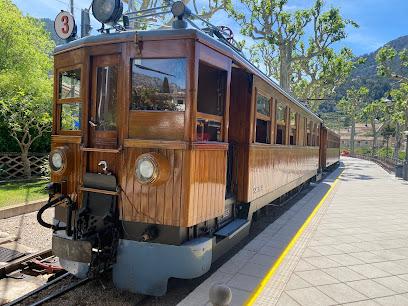
Platja de Santa Ponça
Experience the pristine beauty of Platja de Santa Ponça, a captivating beach destination in the Balearic Islands, perfect for relaxation and adventure.
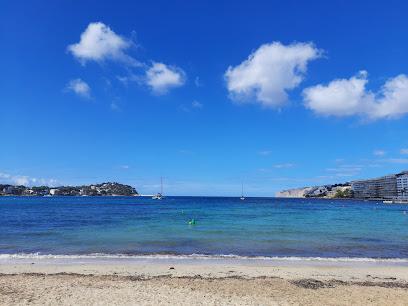
Sanctuary of Sant Salvador
Explore the Sanctuary of Sant Salvador, a breathtaking historical shrine in Felanitx, offering stunning views and rich cultural heritage in the heart of the Balearic Islands.

Santuari de Lluc
Discover the serene beauty and spiritual significance of Santuari de Lluc, a hidden gem in the Balearic Islands, perfect for reflection and relaxation.

Royal Palace of La Almudaina
Explore the Royal Palace of La Almudaina in Palma, a stunning historical landmark showcasing the rich cultural heritage and architectural beauty of the Balearic Islands.

Katmandu Park
Discover endless fun and adventure at Katmandu Park, a premier theme park in Magaluf with thrilling rides, water attractions, and immersive experiences for all ages.

House of Son Amar
Discover the captivating blend of fine dining and mesmerizing performances at the House of Son Amar in the scenic Balearic Islands.
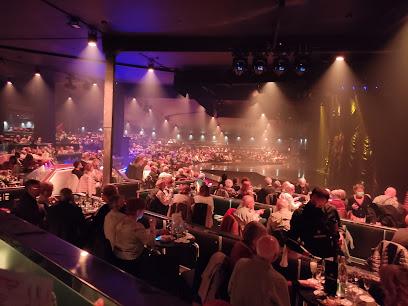
Parc de Sa Feixina
Experience the serene beauty of Parc de Sa Feixina, a tranquil park in Palma perfect for relaxation, art, and family fun.
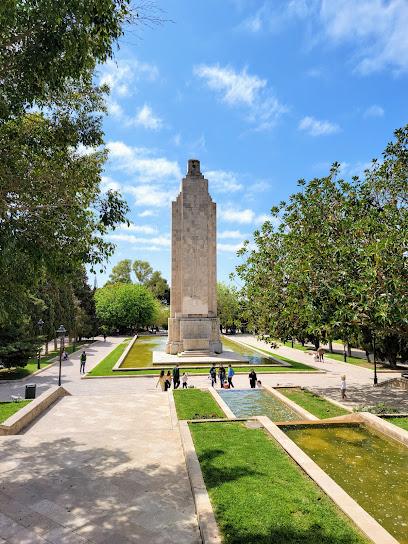
Llotja de Palma
Explore the Llotja de Palma, a stunning historical landmark showcasing exquisite Gothic architecture and vibrant cultural experiences in the heart of Palma.
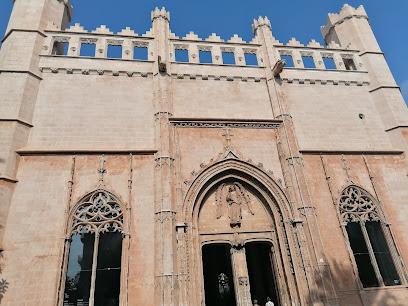
Auditòrium de Palma
Discover the heart of Palma's cultural scene at Auditòrium de Palma, a premier venue for unforgettable live music and performing arts.

Cala de Deià
Experience the serene beauty of Cala de Deià, a stunning beach destination in the Balearic Islands, perfect for relaxation and adventure.
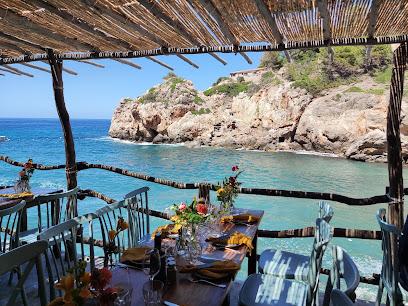
Essential places to dine
Restaurante Casa Julio
Discover the flavors of Spain at Restaurante Casa Julio in Palma - a cozy spot for authentic Mediterranean dining.
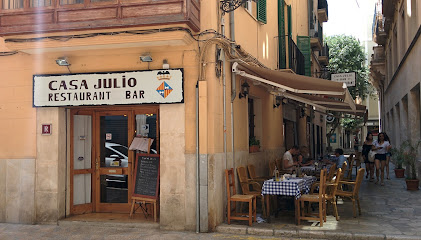
Anima Beach Palma
Discover Anima Beach Palma - where Mediterranean flavors meet stunning beach views in the heart of Mallorca.
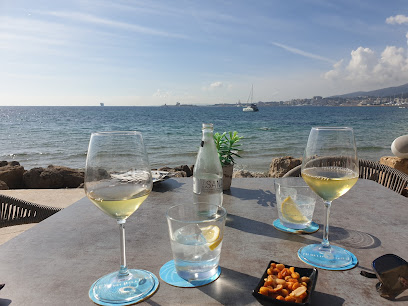
OMBU Passeig del Born
Experience authentic Mediterranean cuisine at OMBU Passeig del Born - where delicious tapas meet innovative cocktails in Palma's vibrant heart.
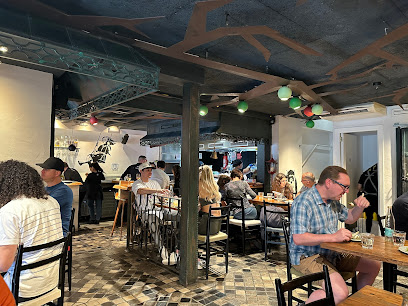
Restaurant PESQUERO
Discover Mediterranean delights at Restaurant PESQUERO in Palma - fresh seafood, delicious tapas & refreshing cocktails by the waterfront.
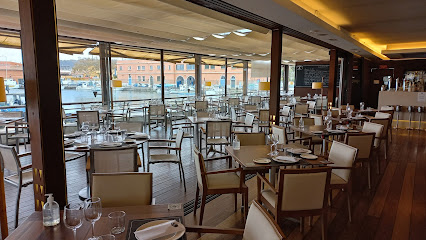
La Botana
Discover La Botana: A delightful Mediterranean restaurant in Palma offering authentic Spanish tapas and an unforgettable dining experience.
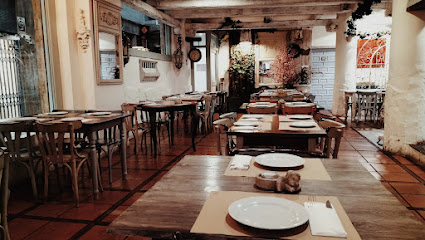
La Bodeguilla
Experience the best of Mediterranean flavors at La Bodeguilla in Palma – where fine dining meets local tradition.
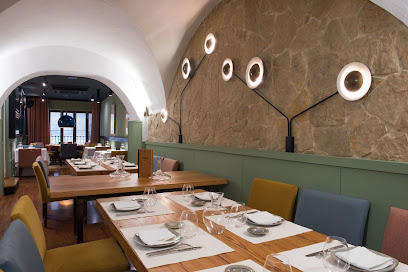
El Camino
Experience authentic Mediterranean dining at El Camino in Palma with delicious Spanish cuisine and tapas in a cozy atmosphere.
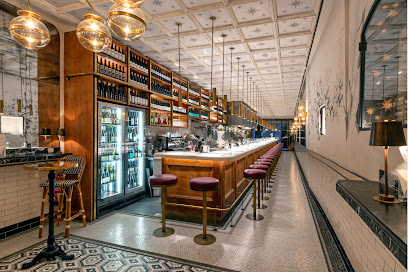
Born 8
Experience the best of Balearic cuisine at Born 8 - a culinary gem in the heart of Palma offering fresh flavors and unforgettable ambiance.
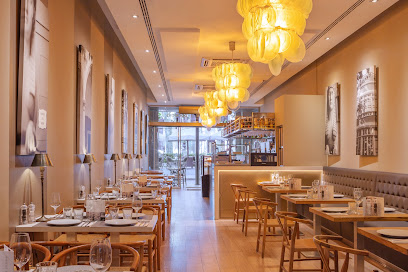
Tast Club
Discover the vibrant flavors of Spain at Tast Club, where exquisite tapas meet innovative cocktails in the heart of Palma.
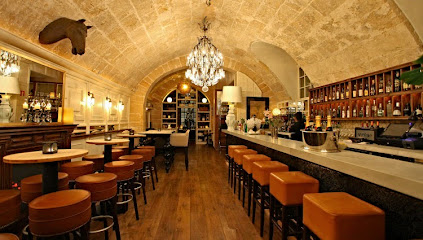
Restaurant El Pilón
Experience authentic Majorcan cuisine at Restaurant El Pilón – where every dish tells a story through its exquisite flavors.
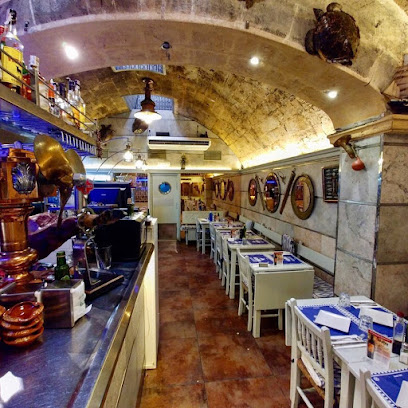
Restaurante Casa Maruka
Experience exquisite Mediterranean flavors at Restaurante Casa Maruka in Palma, where every dish tells a story of tradition and freshness.
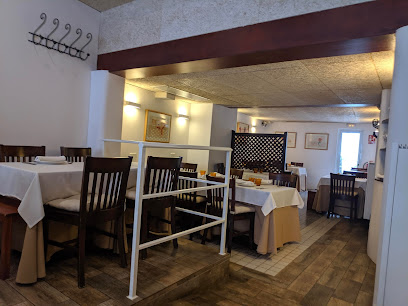
Wine & Food Restaurant
Discover exquisite Mediterranean flavors at Wine & Food Restaurant in Palma - where culinary innovation meets tradition.
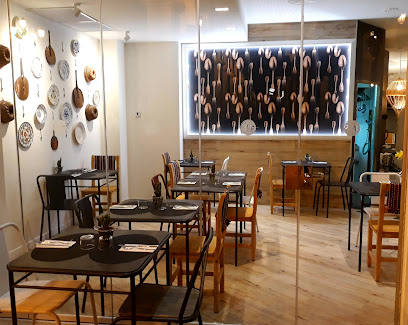
Adrian Quetglas Restaurant
Experience Mediterranean culinary artistry at Adrian Quetglas Restaurant in Palma, where each dish is crafted to perfection for discerning palates.
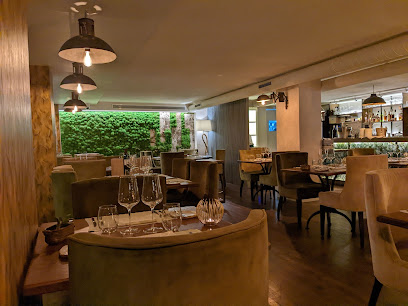
Mar de Nudos Mediterranean & Japanese cuisine
Experience an exquisite fusion of Mediterranean and Japanese cuisine at Mar de Nudos in Palma - where every dish tells a story.
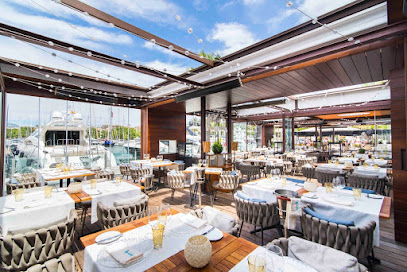
Beewi
Discover Beewi: A lively tapas bar in Palma offering authentic Mediterranean flavors in a charming setting.

Markets, malls and hidden boutiques
ALE-HOP
Explore ALE-HOP in Palma for unique gifts and souvenirs that capture the essence of Mallorca's vibrant culture.
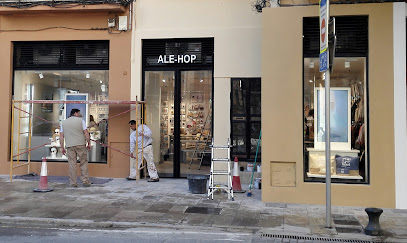
Louis Vuitton Palma De Mallorca
Discover the epitome of luxury at Louis Vuitton Palma De Mallorca, where elegance meets exquisite craftsmanship in the heart of the Balearic Islands.
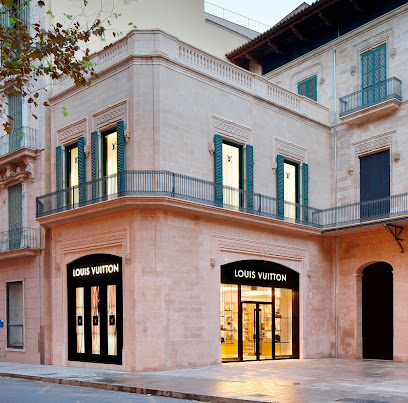
Maricastaña
Discover the best of Balearic fashion at Maricastaña, a stylish clothing store in Palma offering trendy apparel and exquisite jewelry.
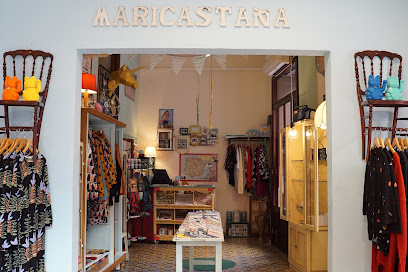
Tristant Shop
Explore Tristant Shop in Palma for unique gifts that capture the spirit of the Balearic Islands, perfect for souvenirs and keepsakes.
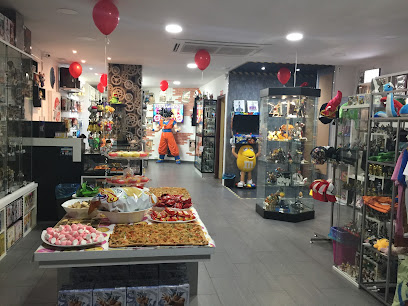
Pasatiempos
Discover the trendy youth clothing store Pasatiempos in Palma, offering stylish apparel and a vibrant shopping experience in the heart of the Balearic Islands.
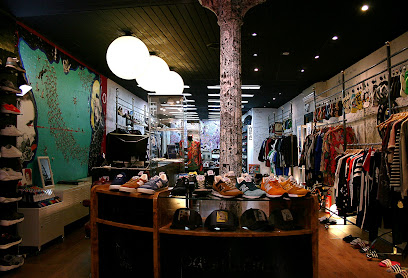
UNICO Vintage store
Discover unique fashion treasures at UNICO Vintage Store in Palma, the ultimate destination for vintage clothing lovers seeking timeless style.

Flamingos Vintage Mallorca
Explore unique vintage clothing in Palma at Flamingos Vintage Mallorca, a sustainable fashion destination that celebrates individuality and style.
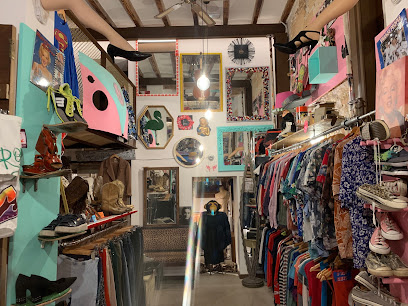
Típika
Discover Típika in Palma, your go-to gift shop for unique local crafts and authentic Mallorcan souvenirs.
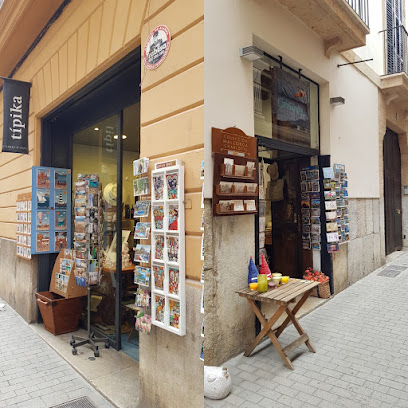
AGUA DE BALEARES Palma
Experience the enchanting aromas of Mallorca at AGUA DE BALEARES, Palma's premier perfume and souvenir store.
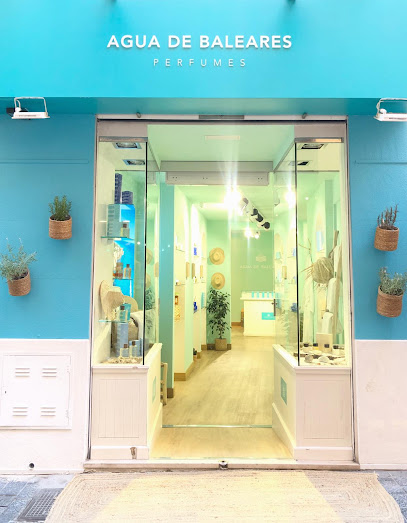
Estiu Concept Store
Discover Estiu Concept Store in Palma, where unique handicrafts and stylish accessories celebrate the artisanal culture of the Balearic Islands.
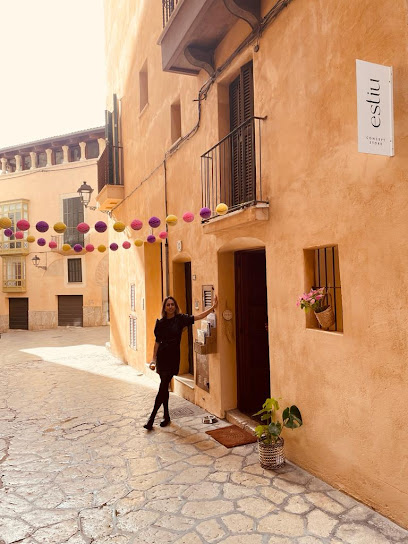
La Principal
Explore La Principal in Palma for stylish menswear, quality craftsmanship, and a unique shopping experience in the heart of the Balearic Islands.

Rita´s House vintage | second hand
Explore the enchanting world of vintage fashion at Rita's House Vintage, Palma's premier second-hand clothing destination, where every piece tells a story.
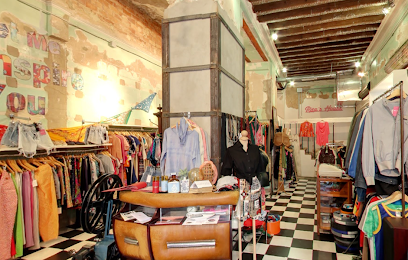
Sandro Paris
Explore the elegance of Sandro Paris in Palma - a boutique offering exquisite clothing, bags, and accessories for discerning fashion lovers.

La Insular
Discover the essence of Palma at La Insular, a charming gift shop filled with local crafts and unique souvenirs from the Balearic Islands.
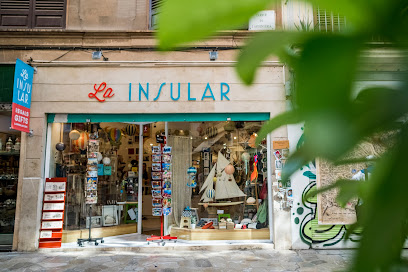
Forum Shop
Discover the essence of Balearic fashion and accessories at Forum Shop, Palma's vibrant retail destination for unique styles and local treasures.
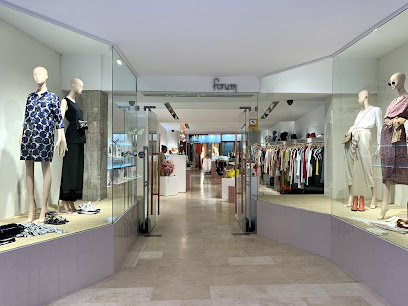
Essential bars & hidden hideouts
Bar Abaco
Discover the enchanting Bar Abaco in Palma, where exquisite cocktails and a vibrant atmosphere create unforgettable nights.
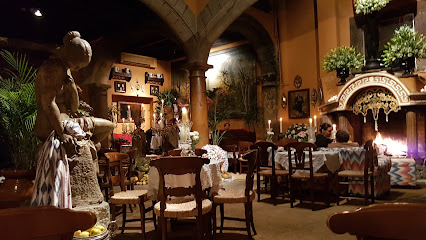
Ginbo Cocktail Bar
Discover Ginbo Cocktail Bar in Palma, where innovative cocktails meet a lively atmosphere for the perfect night out.
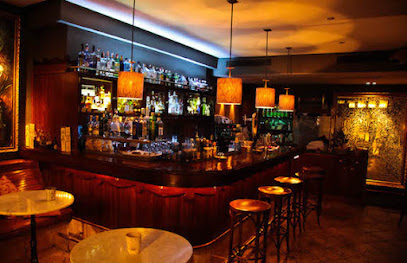
Lennox The Pub - Palma
Discover the vibrant atmosphere of Lennox The Pub in Palma, where sports, food, and friendly faces come together for an unforgettable experience.
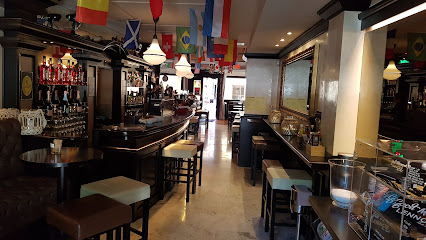
Brassclub
Discover Palma's vibrant nightlife at Brassclub, where expertly crafted cocktails meet a stylish atmosphere for an unforgettable evening.
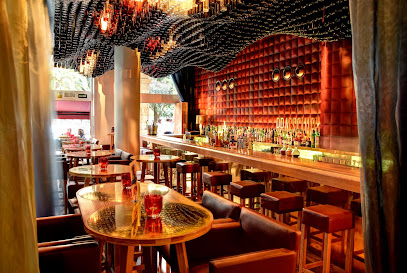
Up and Down
Discover the vibrant nightlife at Up and Down, Palma's lively bar offering delicious cocktails and a welcoming atmosphere for tourists and locals alike.
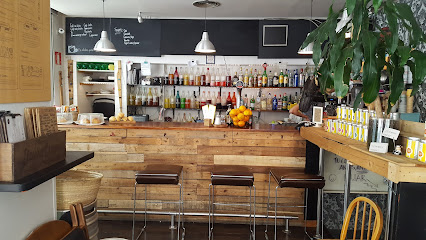
Bar Nicolás
Experience the vibrant nightlife of Palma at Bar Nicolás, a premier cocktail bar with expertly crafted drinks and a welcoming atmosphere.
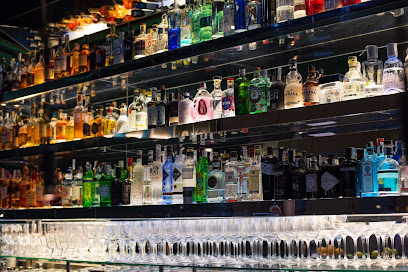
Chapeau Palma
Unwind with unique cocktails in the lively atmosphere of Chapeau Palma, a must-visit cocktail bar in the heart of Palma's nightlife.

the soho bar
Discover the vibrant Soho Bar in Palma, a cocktail haven offering creative drinks and a lively atmosphere perfect for an unforgettable night out.
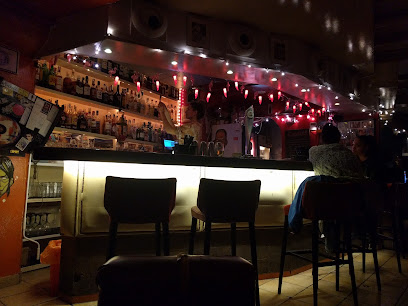
Agabar Cocktail Bar
Discover Palma's vibrant nightlife at Agabar Cocktail Bar, where expertly crafted cocktails meet a lively atmosphere for an unforgettable evening.
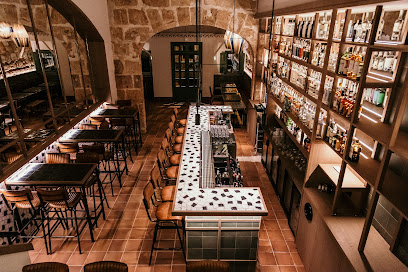
Cafe Atlántico
Experience the vibrant nightlife of Palma at Cafe Atlántico, where expertly crafted cocktails and an energetic atmosphere await you.
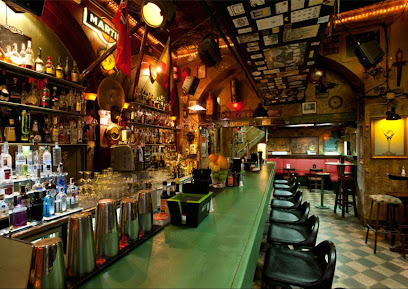
Gibson Bar
Experience the vibrant cocktail culture at Gibson Bar in Palma, where innovative drinks meet a stylish atmosphere for a memorable night out.

El Barito
Experience the vibrant nightlife of Palma at El Barito, where expertly crafted cocktails and a welcoming atmosphere await.
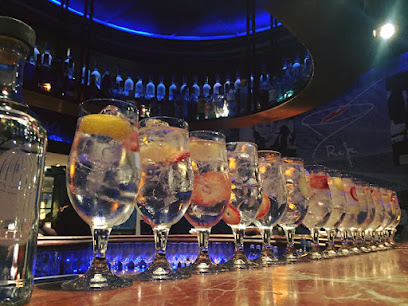
Corner Bar Palma
Discover Corner Bar Palma, the ultimate sports bar experience in the heart of Palma, where lively ambiance meets great drinks and live sports.

Agua Bar
Discover the rhythm of Palma's nightlife at Agua Bar, a lively bar and live music venue in the heart of the city.
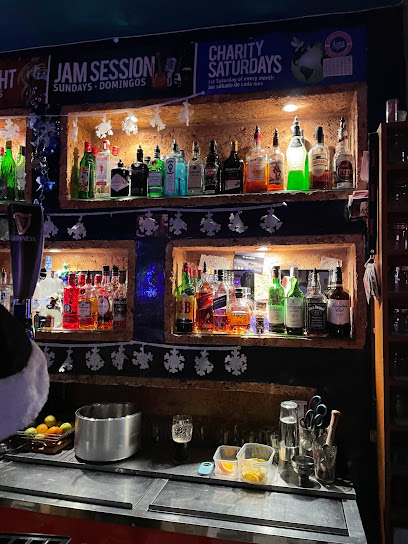
Bar LAB
Discover Bar LAB in Palma: a cocktail bar and bartending school offering innovative drinks and vibrant nightlife experiences in the Balearic Islands.
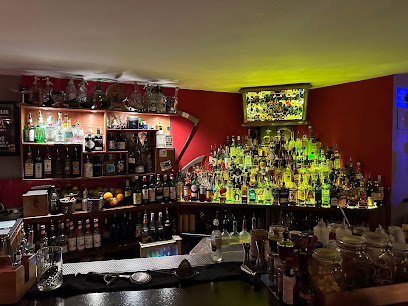
Travel experiences inspired by this city
Explore more travel diariesLocal Phrases
-
- HelloHola
[o-la] - GoodbyeAdiós
[a-di-ós] - YesSí
[sí] - NoNo
[no] - Please/You're welcomePor favor/De nada
[por fa-vor / de na-da] - Thank youGracias
[gra-ci-as] - Excuse me/SorryPerdón/Lo siento
[per-dón / lo sien-to] - How are you?¿Cómo estás?
[¿có-mo es-tás?] - Fine. And you?Bien. ¿Y tú?
[bien. ¿y tú?] - Do you speak English?¿Hablas inglés?
[¿ha-blas in-glés?] - I don't understandNo entiendo
[no en-tien-do]
- HelloHola
-
- I'd like to see the menu, pleaseMe gustaría ver la carta, por favor
[me gus-ta-ría ver la car-ta, por fa-vor] - I don't eat meatNo como carne
[no co-mo car-ne] - Cheers!¡Salud!
[¡sa-lud!] - I would like to pay, pleaseMe gustaría pagar, por favor
[me gus-ta-ría pa-gar, por fa-vor]
- I'd like to see the menu, pleaseMe gustaría ver la carta, por favor
-
- Help!¡Ayuda!
[¡a-yu-da!] - Go away!¡Vete!
[¡ve-te!] - Call the Police!¡Llama a la policía!
[¡ya-ma a la po-li-cía!] - Call a doctor!¡Llama a un médico!
[¡ya-ma a un mé-di-co!] - I'm lostEstoy perdido/a
[es-toy per-di-do/a] - I'm illEstoy enfermo/a
[es-toy en-fer-mo/a]
- Help!¡Ayuda!
-
- I'd like to buy...Me gustaría comprar...
[me gus-ta-ría com-prar] - I'm just lookingSolo estoy mirando
[so-lo es-toy mi-ran-do] - How much is it?¿Cuánto cuesta?
[¿cuán-to cues-ta?] - That's too expensiveEsto es demasiado caro
[es-to es de-ma-sia-do ca-ro] - Can you lower the price?¿Puede bajar el precio?
[¿pue-de ba-jar el pre-cio?]
- I'd like to buy...Me gustaría comprar...
-
- What time is it?¿Qué hora es?
[¿qué ho-ra es?] - It's one o'clockEs la una
[es la u-na] - Half past (10)Las diez y media
[las diez y me-dia] - MorningMañana
[ma-ña-na] - AfternoonTarde
[tar-de] - EveningNoche
[no-che] - YesterdayAyer
[a-yer] - TodayHoy
[hoy] - TomorrowMañana
[ma-ña-na] - 1Uno
[u-no] - 2Dos
[dos] - 3Tres
[tres] - 4Cuatro
[cua-tro] - 5Cinco
[cin-co] - 6Seis
[seis] - 7Siete
[sie-te] - 8Ocho
[o-cho] - 9Nueve
[nue-ve] - 10Diez
[diez]
- What time is it?¿Qué hora es?
-
- Where's a/the...?¿Dónde está...?
[¿dón-de es-tá...?] - What's the address?¿Cuál es la dirección?
[¿cuál es la di-rec-ción?] - Can you show me (on the map)?¿Puedes enseñarme (en el mapa)?
[¿pue-des en-se-ñar-me (en el ma-pa)?] - When's the next (bus)?¿Cuándo es el próximo (autobús)?
[¿cuán-do es el pró-xi-mo (au-to-bús)?] - A ticket (to ....)Un billete (a ....)
[un bi-lle-te (a ....)]
- Where's a/the...?¿Dónde está...?
History of Palma de Mallorca
-
Palma de Mallorca, founded by the Romans in 123 BCE, was originally named 'Palmaria'. The strategic location of the Balearic Islands made Palma a crucial point for trade and defense. The Roman influence is still evident today in the remnants of ancient structures and roads scattered across the city.
-
In 903 AD, the Moors conquered Palma, renaming it 'Medina Mayurqa'. During this period, the city flourished as an important center of trade and culture in the Islamic world. The architectural and cultural influences from this era are still visible in the narrow, winding streets of the old town and the Arab Baths.
-
In 1229, King James I of Aragon conquered Palma, marking the beginning of Christian rule. This period saw significant changes, including the construction of iconic landmarks such as La Seu Cathedral and Bellver Castle. The Gothic architecture from this era left an indelible mark on the city's skyline.
-
During the 14th and 15th centuries, Palma experienced a golden age as a maritime power. The city's strategic location in the Mediterranean made it a hub for trade. This prosperity led to the construction of grand mansions and palaces, many of which can still be seen in the historic district of La Lonja.
-
In the 20th century, Palma underwent significant modernization. The development of infrastructure and the rise of tourism transformed the city into a popular destination. The blend of historical charm with modern amenities attracts millions of visitors each year, eager to explore its rich heritage and vibrant culture.
-
In recent years, there has been a strong focus on preserving Palma's cultural heritage. Initiatives to restore historical buildings and promote traditional festivals, such as Sant Sebastià and La Nit de l'Art, have reinforced the city's identity. These efforts ensure that Palma's history remains an integral part of its present and future.
Palma de Mallorca Essentials
-
Palma de Mallorca is primarily accessed via Palma de Mallorca Airport (PMI), which is well-connected to numerous international destinations. The airport is located about 8 kilometers east of Palma city center. Travelers can also arrive by ferry from mainland Spain, with regular services from cities such as Barcelona, Valencia, and Denia.
-
Palma de Mallorca offers a variety of transportation options. The public bus system, operated by EMT, covers the city and surrounding areas. Taxis are readily available and can be hailed on the street or booked via phone or app. Car rentals are a popular option for exploring the island at your own pace. Bicycles and electric scooters are also available for rent and are a convenient way to navigate the city.
-
The official currency in Palma de Mallorca is the Euro (EUR). Credit and debit cards are widely accepted in most establishments, including restaurants, shops, and hotels. ATMs are plentiful throughout the city. It's advisable to carry some cash, especially when visiting smaller towns or rural areas where card payments may not be accepted.
-
Palma de Mallorca is generally a safe destination for tourists. However, petty crimes such as pickpocketing can occur, especially in crowded areas like tourist attractions and public transport hubs. Areas like the Paseo Marítimo and some parts of the city center can see increased activity at night, so it's best to stay vigilant and avoid poorly lit or deserted areas after dark. Always keep an eye on your belongings and avoid displaying expensive items.
-
In case of emergency, dial 112 for immediate assistance. This number works for police, fire, and medical emergencies. Palma de Mallorca has several hospitals and medical facilities; the main public hospital is Son Espases University Hospital. Pharmacies are widely available and can provide over-the-counter medications. It is advisable to have travel insurance that covers medical emergencies.
-
Fashion: Do dress comfortably, but avoid overly revealing clothing, especially when visiting religious sites. Beachwear should be confined to beaches and pool areas. Religion: Do respect local customs and traditions. When visiting churches, cover your shoulders and legs. Public Transport: Do be respectful and considerate of other passengers. Don’t eat or drink on public transport. Greetings: Do greet people with a friendly 'Hola!' or 'Buenos días.' A handshake is a common greeting. Eating & Drinking: Do try local specialties and be open to trying new dishes. Don’t rush your meals; eating is a social activity in Spain.
-
To experience Palma de Mallorca like a local, visit the Mercat de l'Olivar, a bustling market offering fresh produce and local delicacies. Take a leisurely stroll along the Passeig del Born, a popular shopping and dining street. Explore the lesser-known neighborhoods such as Santa Catalina, known for its vibrant nightlife and bohemian atmosphere. Don't miss the traditional 'sobrassada' sausage and 'ensaimada' pastry. Engage with locals; they are friendly and often eager to share insights about their city.
Trending Landmark in Palma de Mallorca
-
Catedral-Basílica de Santa María de Mallorca
-
Plaça d'Espanya
-
Castell de Bellver
-
Royal Palace of La Almudaina
-
Llotja de Palma
-
Banys Àrabs
-
Poble Espanyol de Mallorca
-
Parc de la Mar
-
Basílica de Sant Miquel de Palma
-
Basílica de Sant Francesc
-
Coliseu Balear
-
Torre d'en Pau
-
Casal Solleric
-
Convent de Santa Clara
-
City Sightseeing Palma de Mallorca
Nearby Cities to Palma de Mallorca
-
Things To Do in Barcelona
-
Things To Do in Tarragona
-
Things To Do in Valencia
-
Things To Do in Girona
-
Things To Do in Lleida
-
Things To Do in Alicante
-
Things To Do in Algiers
-
Things To Do in Teruel
-
Things To Do in Pas de la Casa
-
Things To Do in Andorra la Vella
-
Things To Do in Escaldes-Engordany
-
Things To Do in Tizi Ouzou
-
Things To Do in Encamp
-
Things To Do in La Massana
-
Things To Do in Soldeu
















